Part 1 of 3: Thirteen year longitudinal analysis of mental health condition trends among Discovery Health Medical Scheme members

In this comprehensive, three-part series, we explore key trends in Discovery Health Medical Scheme (DHMS) members living with a mental health condition. The review spans a 13-year period from 2012 to 2024. Here, in part one, we show that the prevalence and incidence of mental health conditions have increased in DHMS. We explain how we identify this population in our data, and how mental health condition prevalence is growing relative to other chronic conditions.
Authors
Discovery Health Intelligence Team members Katherine Tregoning (Actuary), Claudia Pastellides (Actuary), Cassi Rubin (Head: Mental Health Risk), Lara Wayburne (Chief Health Intelligence Actuary)
Overview
Mental health is becoming an increasingly important focus and concern, both globally and within South Africa, and Discovery Health Medical Scheme has been tracking this trend for the past 13 years. Approximately 15% of members have either registered or claimed for mental health conditions in 2024, with depression being the most common condition. The data shows a steady rise in prevalence each year and how new registrations have accelerated since the start of the COVID‑19 pandemic.
Our analysis also reveals a strong link between physical and mental health. Members with chronic conditions are more likely to be living with mental health conditions, and this is especially true for those with multiple diagnoses. Discovery Health Medical Scheme is responding to these patterns by refining its benefits to better support members with both physical and mental health needs. We aim to offer integrated care that reflects the complex relationship between chronic illness and mental wellbeing, helping members manage their physical and mental health more effectively over time.
- In part two of our three‑part analysis, we explore which demographic cohorts are more likely to claim or register for mental health conditions, and how these conditions vary between groups.
- In part three, we examine the rise in the severity of depression symptoms as evidenced by the PHQ‑9 assessments that DHMS members complete. We highlight the support available to DHMS members to effectively manage their mental health conditions, including the Mental Health Care Programme, internet‑based cognitive behavioural therapy (ICBT) and the Depression Risk Management Programme.
Introduction
Addressing mental wellbeing poses a critical global healthcare challenge. One in every eight people globally is living with a mental health condition, as reported by the World Health Organization (WHO) in 2024. Worldwide, 5% of adults are affected by depression and 4% have experienced an anxiety disorder.1 In South Africa, a paper published in 2022 by the Wits Medical Research Council found that a quarter (25.7%) of South Africans suffer from probable depression.2
The rise in the prevalence of mental health conditions worldwide, and their associated costs, makes the mental health space a primary area of focus for Discovery Health Medical Scheme. We're committed to offering comprehensive care for our members, whether they're at risk or already diagnosed.
Identifying the population with mental health conditions - an extensive dataset
This analysis of Discovery Health Medical Scheme (DHMS) members registered or claiming for a mental health condition is vast. It spans a 13‑year period and includes data from 5.5 million distinct DHMS members. On average, these members were followed for 5.9 years each (the average total time each member's data was tracked or observed). This scales to 33 million person years of data.
Of the 5.5 million DHMS members, 1.4 million members either registered or claimed for a mental health condition at some point. On average, the members with a mental health condition were followed for 2.4 years each (the period they were in the mental health dataset since their first entry).
In our analysis, the population living with a mental health condition is defined as any DHMS member who has either registered or claimed for a mental health condition. Mental health conditions can range from mood disorders (such as bipolar mood disorder or depression) and disorders associated with anxiety, personality or psychosis to eating behaviours, trauma and substance use.3 A mental health episode of care could involve any of the following:
- Registering for a mental health condition
- Regularly using psychiatric medicine
- Consulting a treating psychiatrist, psychologist or general practitioner
- Being admitted to a hospital or psychiatric facility with an ICD‑10 code relating to a mental health condition
In 2024, 58% of the population with a mental health condition claimed for a mental health condition but did not register for the available basket of care (Figure 1). This gap in access to care shows there is potential stigma linked to registering for a mental health condition. There is a need for making sure Scheme members know that condition‑specific benefits are available to them. As shown in Figure 1, 36% of the population both registered for the condition and claimed for the related mental health benefits.
1 https://huntingtonpsych.com/the-latest-mental-health-statistics-what-the-numbers-say-about-the-state-of-our-minds-in-2024
2 https://www.frontiersin.org/journals/public-health/articles/10.3389/fpubh.2022.986531/full
3 https://www.healthdirect.gov.au/mental-illness
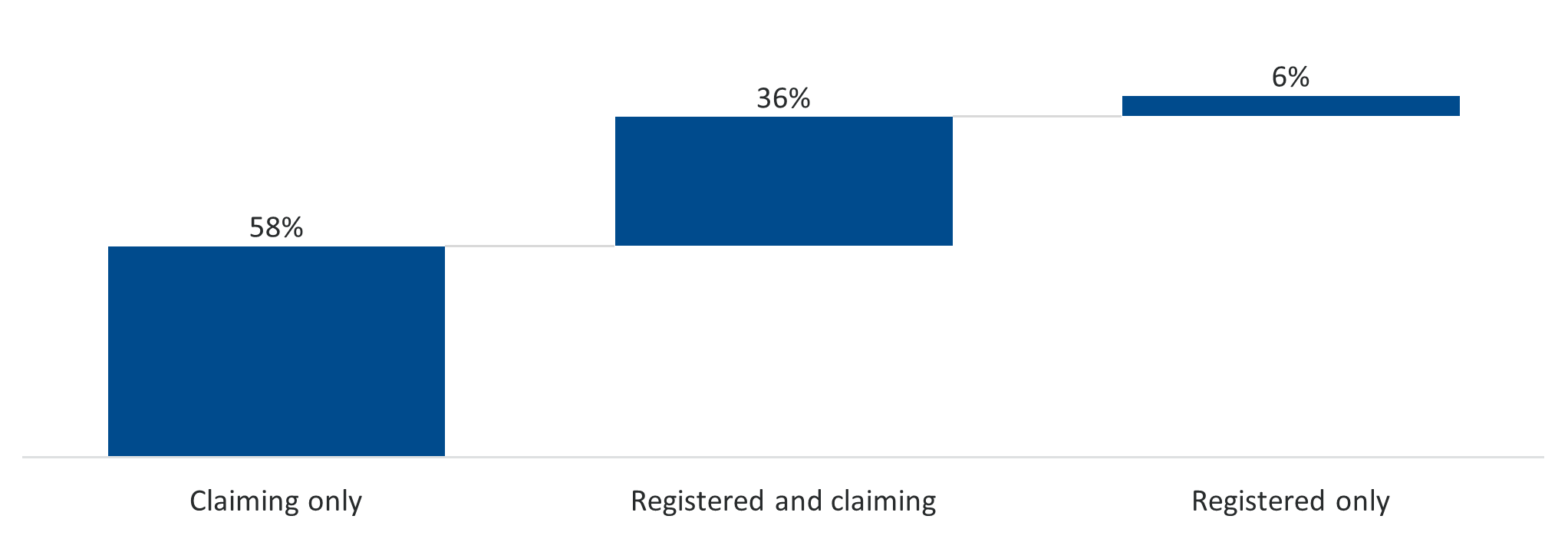
Figure 1: Split between claims and registrations for mental health conditions in the DHMS in 2024
The level of care available to a DHMS member for a mental health condition depends on whether they have registered for it. This level of care is guided by cover for a Prescribed Minimum Benefit4, a condition on the Chronic Disease List5 or through the managed care principles of the Scheme that cover members who are at risk, diagnosed or experiencing more complex circumstances. Mental health conditions that do not fall under the categories mentioned previously can be funded from the DHMS member's day to day benefits.
Growing prevalence and incidence of mental health conditions
The prevalence of mental health conditions is on the rise in the Discovery Health Medical Scheme.6 Figure 2 shows the proportion of DHMS members registered or claiming for a mental health condition each year compared to 2012. In 2024, approximately one in seven scheme members (15.2%) had a mental health condition compared to only one in ten (10.4%) in 2012. This means that over the past 13 years , the prevalence of these mental health conditions has increased by 46% (Figure 2), which is equivalent to a growth rate of 4.4% each year.
4 DHMS members living with depression can apply for the out-of-hospital diagnosis and treatment set of the Prescribed Minimum Benefits basket of care for depression. This means they can have 15 out-of-hospital consultations or 21 days of in-hospital psychiatric treatment.
5 The Chronic Illness Benefit covers medicine for conditions listed on the Prescribed Minimum Benefit Chronic Disease List for all benefit options. The Chronic Illness Benefit covers a specified list of the consultations, procedures and tests needed to diagnose and manage these conditions. Prescribed Minimum Benefits is a set of minimum benefits that, by law, must be provided to all medical scheme members. This includes the diagnosis, treatment and cost of ongoing care for a list of conditions defined in the Medical Schemes Act 131 of 1998.
6 Proportion of DHMS population registered or claiming for a mental health episode of care in a year.
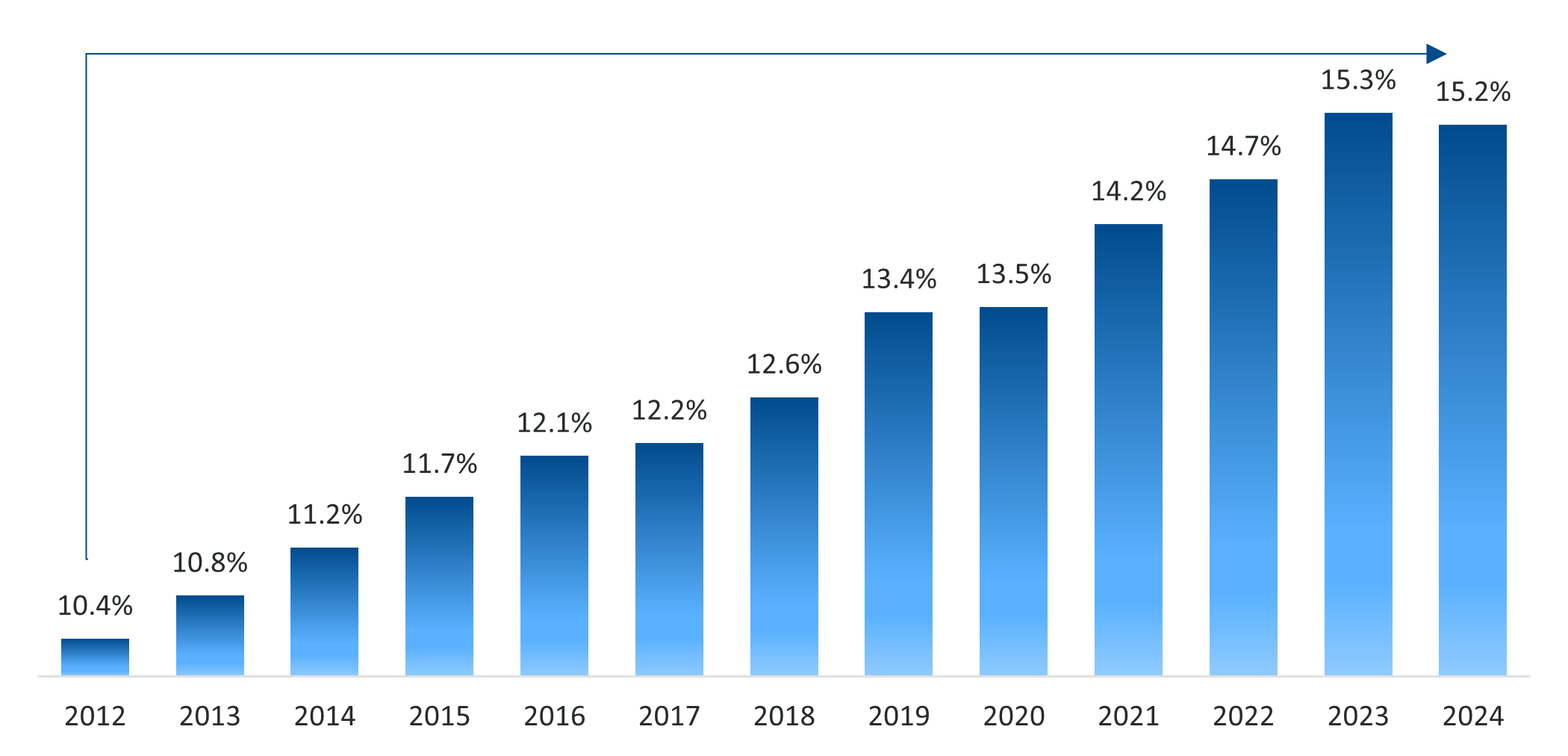
Figure 2: The proportion of DHMS members with mental health conditions over time since 2012
The incidence7 of mental health conditions, standardised for age, has also increased. Figure 3 shows that 1.21% of DHMS members without a prior mental health condition were newly registered in 2024 compared to 0.41% in 2012, highlighting the upward trend in incidence over time. Specifically, there was a 70% rise in the incidence rates of mental health registrations between 2019 and 2023 (0.94% in 2019 vs 1.60% in 2023, Figure 3), compared to only a 48% increase between 2015 and 2019 (0.63% in 2015 vs 0.94% in 2019, Figure 3). This shows that registrations of new mental health conditions accelerated during the COVID‑19 pandemic, in line with global trends.
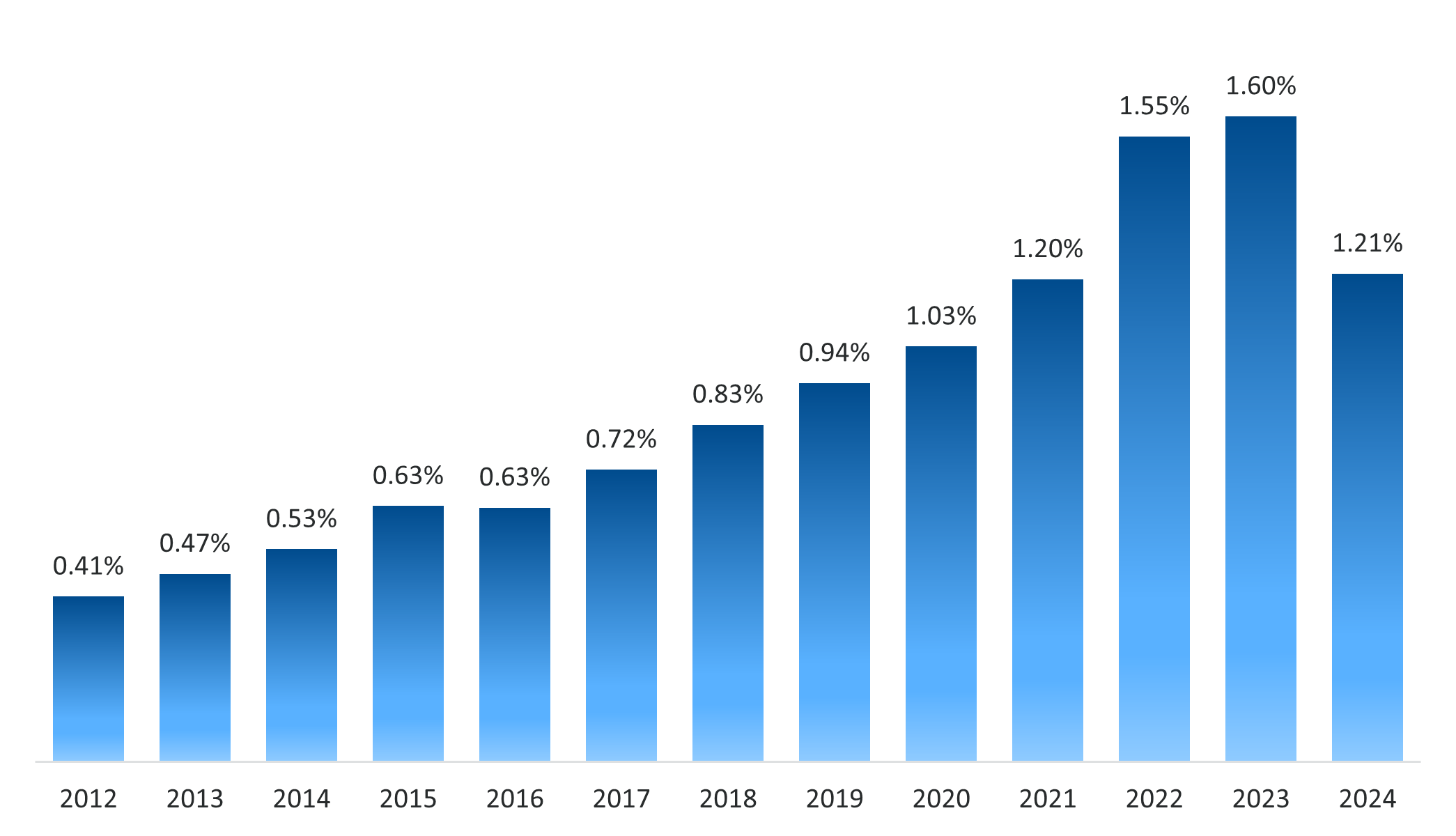
Figure 3: Incidence of registrations of mental health conditions in DHMS members since 2012 (adjusted for age)
7 Incidence is the proportion of members who are newly registered for a psychosocial episode of care in the year.
Figure 4 shows the top five mental health conditions most prevalent in DHMS (based on claims or registrations), as well as their growth in prevalence compared to 2012.
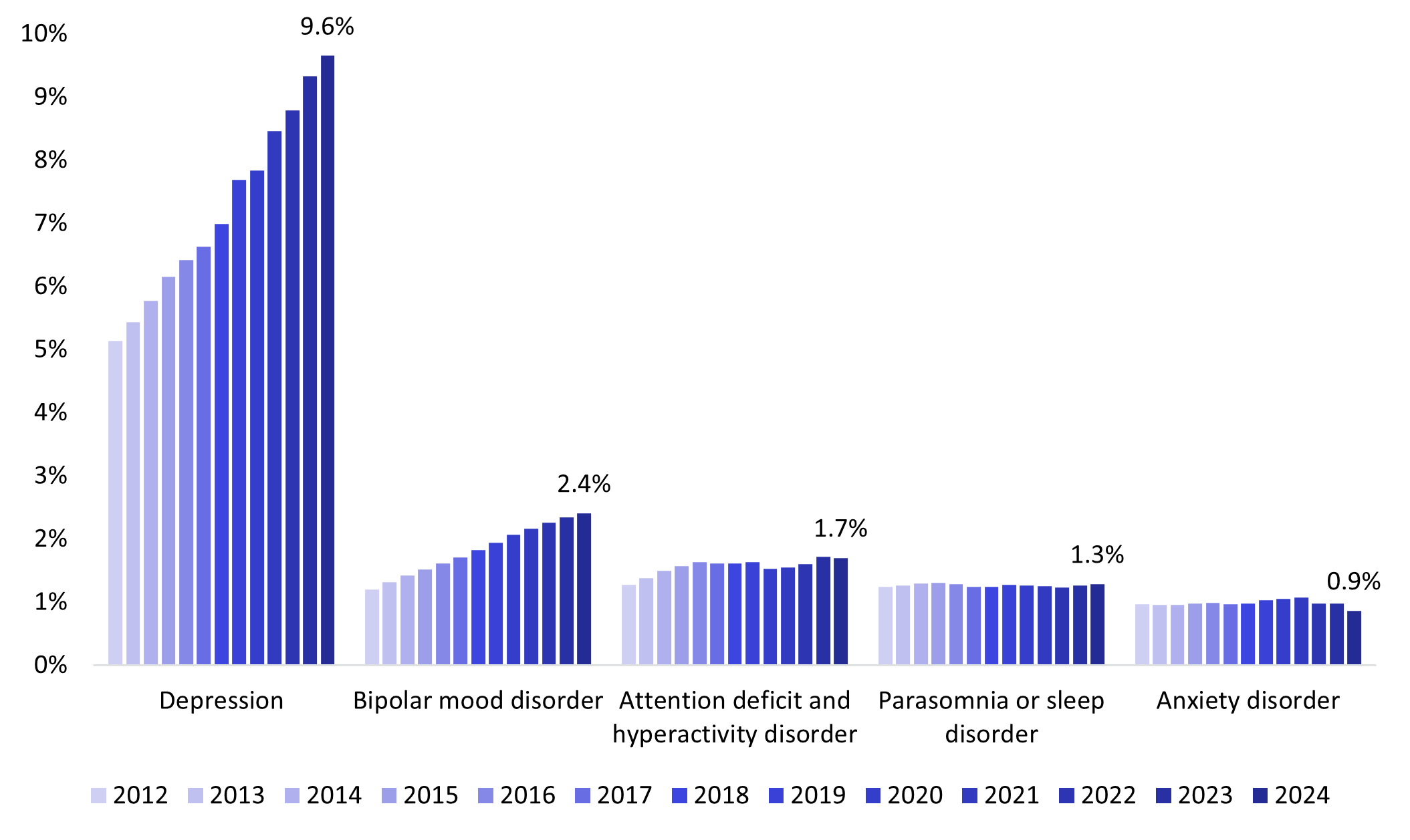
Figure 4: Growth in proportion of DHMS members with mental health conditions (top five) relative to 2012 - members can be registered or claiming for more than one mental health condition
In 2024, 14% of DHMS members living with mental health conditions claimed or registered for the first time (in other words, they could be considered 'newly diagnosed'). 86% of the population has had mental health conditions for 1 year or more, reflecting ongoing claims and re‑registrations for these conditions. Figure 5 shows a growing trend in the proportion of this population with a previous mental health condition claim or registration.
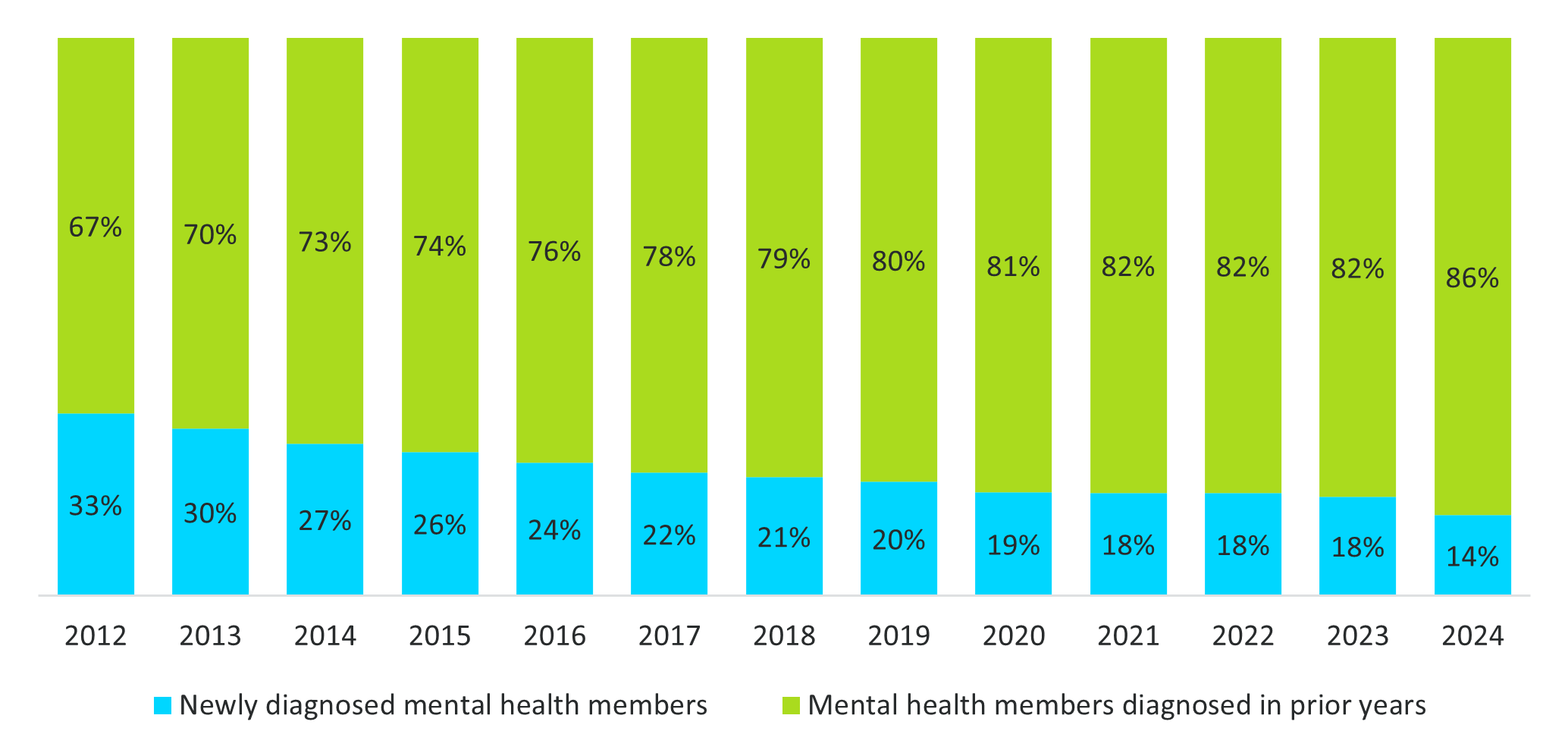
Figure 5: Proportion of the population with a mental health condition by duration in years of a mental health condition
The relationship between mental health conditions and non‑communicable chronic conditions
Depression and bipolar mood disorder are the two fastest‑growing registered mental health conditions, with an increase of 13% and 8% each year respectively from 2012 to 2024. These two conditions outpaced the annual growth in the other top ten registered conditions in 2024, including conditions not related to mental health (Figure 6). Between 2012 and 2024, the prevalence of non‑mental health conditions grew by 9.2% per year on average. In the same period, the prevalence of mental health conditions increased by 10.2% per year on average.
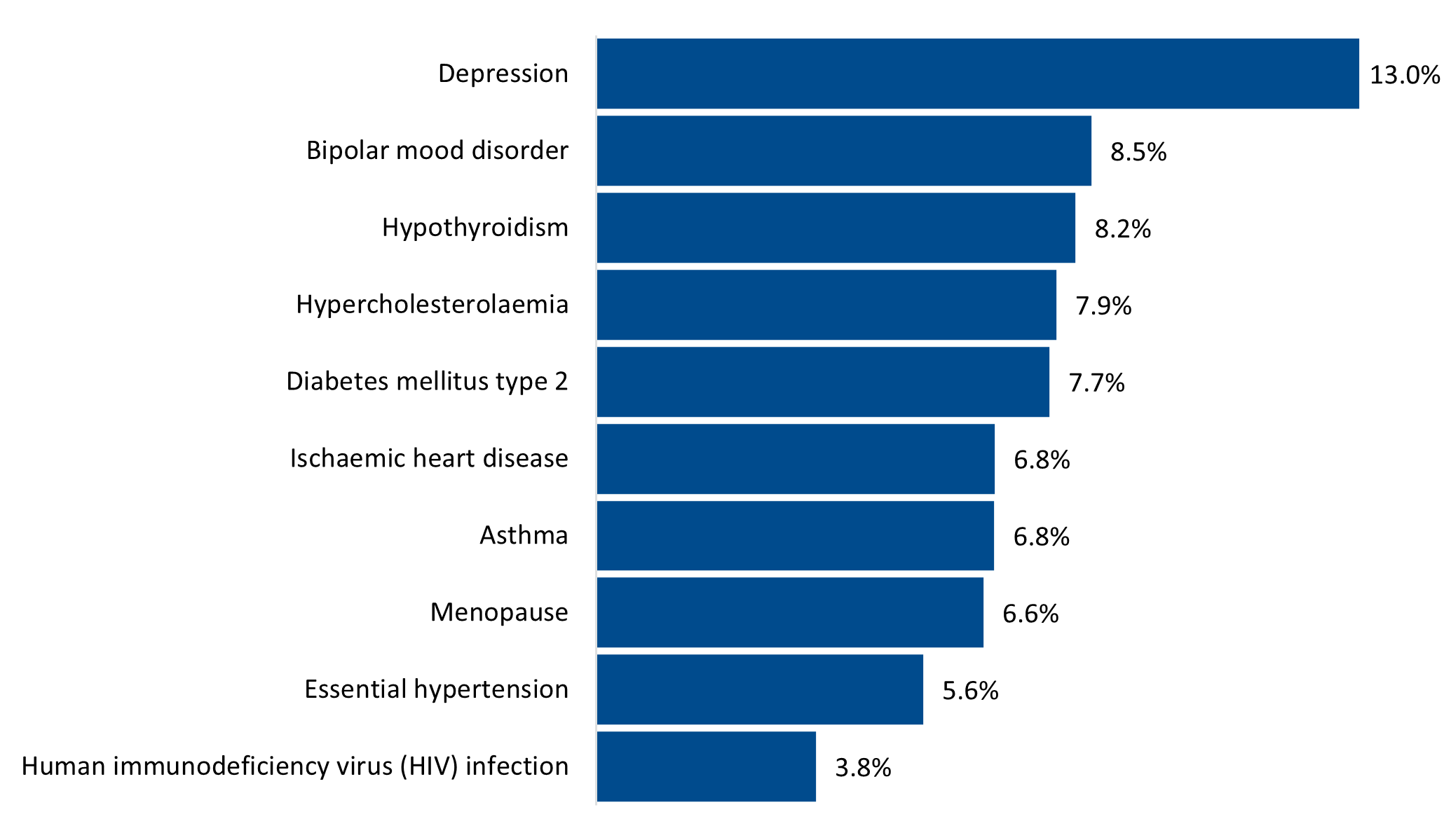
Figure 6: Top ten high volume registered conditions, ranked by annual growth rate from 2012 to 2024
The effect on chronic members of claims and registrations for mental health conditions
The proportion of DHMS members registered for chronic conditions has grown over the past 13 years. These chronic conditions are the 27 diseases listed on the Chronic Disease List for which all registered medical schemes in South Africa must cover the costs of diagnosis, medical management and related medicine. Our data shows that 17% of the population with chronic conditions. In contrast, only 12% of the non‑chronic population claimed or registered for a mental health condition. This shows a relationship between chronic conditions and mental health.
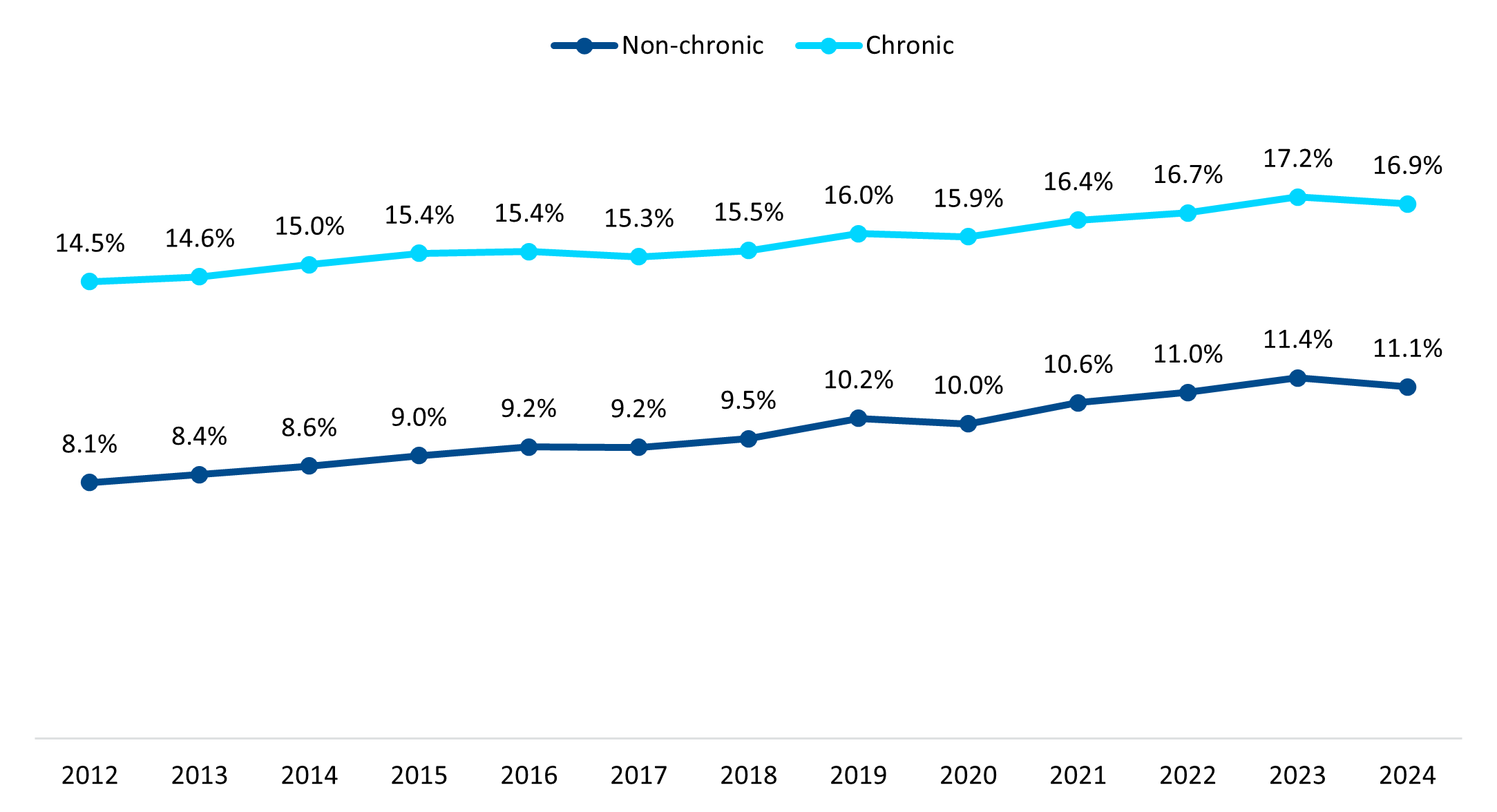
Figure 7: Prevalence of mental health conditions in the chronic vs non‑chronic population
The prevalence of mental health conditions by number of chronic conditions shows that members with more chronic conditions are more likely to submit claims or registrations for mental health conditions. Figure 8 shows that 22% of members with three or more chronic conditions (excluding mental health conditions like bipolar mood disorder and schizophrenia) have a mental health condition. On average, those with three or more chronic conditions have a 72% higher likelihood of experiencing a mental health condition compared to a non chronic member.
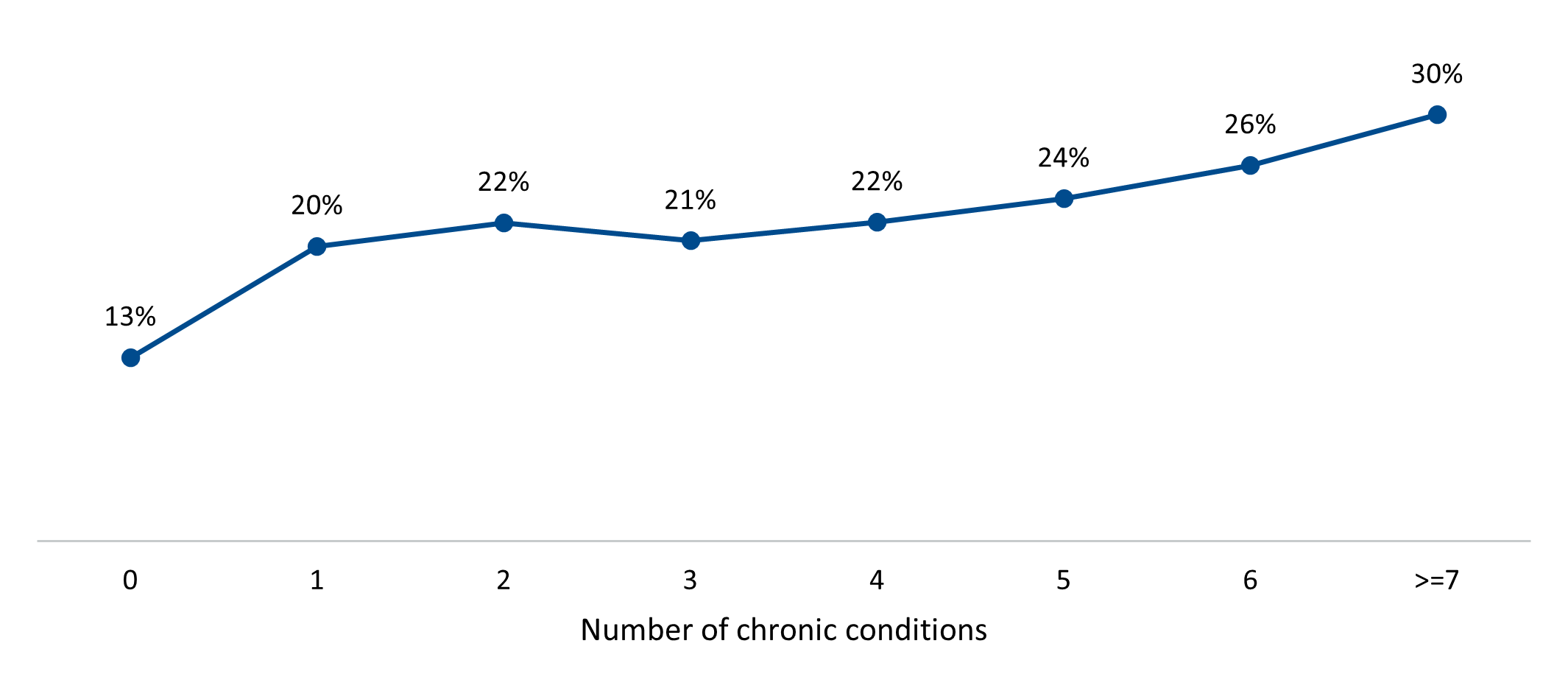
Figure 8: Proportion of DHMS members registered or claiming for mental health conditions by number of chronicin (excluding schizophrenia and bipolar mood disorder)
When looking at diabetes, cancer and cardiovascular disease in particular, Figure 9 shows that members with all three of these conditions have a 25% higher mental health condition prevalence than members with none of the three conditions, after adjusting for relevant risk factors. Members with all three conditions also have a 17% higher prevalence of mental health conditions than members with diabetes only (1.25x vs 1.07x relative prevalence). This highlights the increased burden of mental health conditions amongst complex, chronic populations.
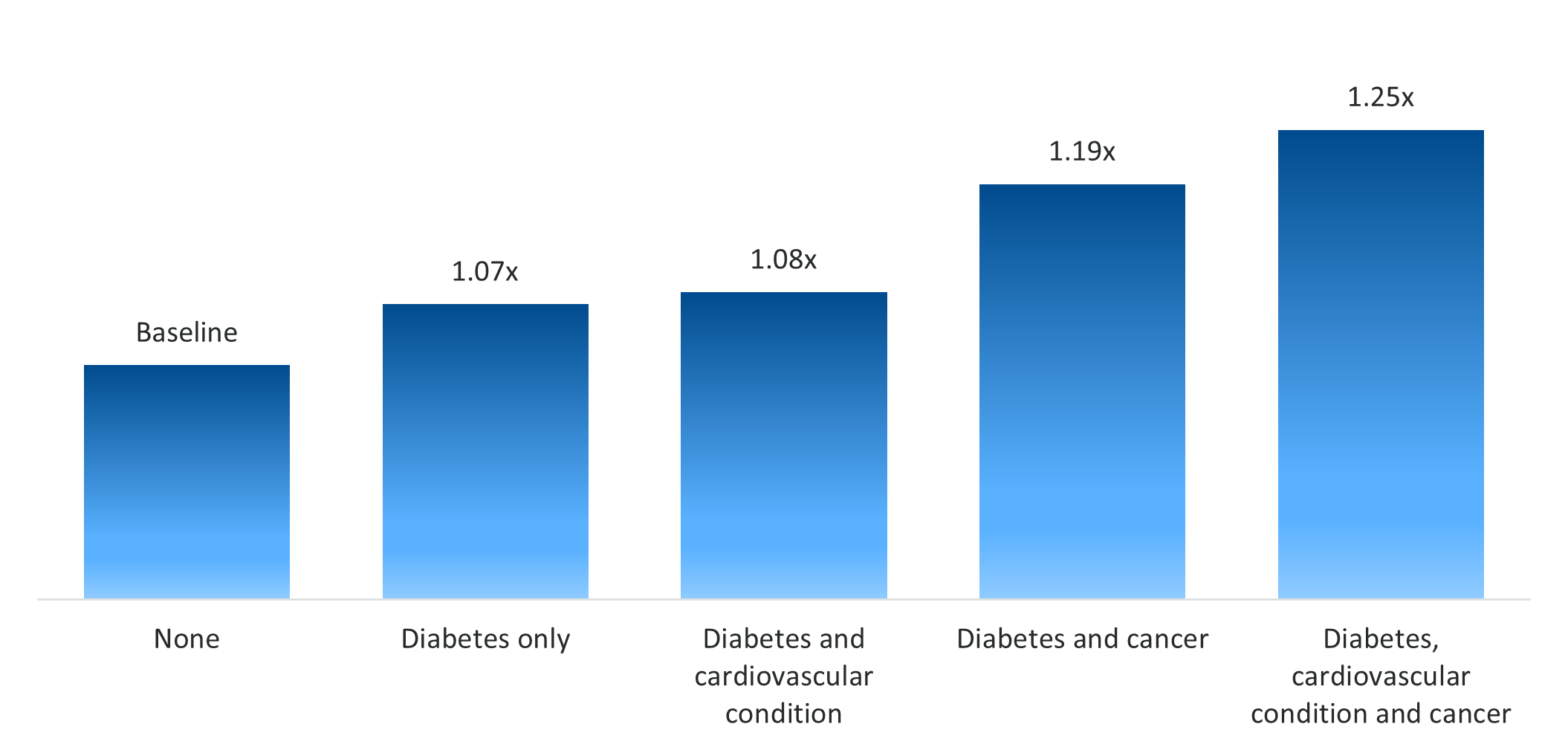
Figure 9: Relative likelihood of registering or claiming for a mental health condition for members with combinations of chronic conditions (standardised for age, benefit option and sex)
Conclusion
Discovery Health Medical Scheme has seen a notable increase in the prevalence of mental health conditions within our membership over the past 13 years, with 1 in 7 members registering or claiming for a mental health condition in 2024. During the COVID‑19 pandemic, there was an increase in the number of and rate at which members registered for a mental health condition for the first time. There has also been an increase in the prevalence of chronic conditions among our members. We've noticed that many members with chronic conditions are increasingly registering or claiming for mental health conditions, particularly depression.
We're committed to helping our members live healthier lives. We aim to identify the underlying trends in the mental health and chronic condition space and then design clinically appropriate benefits to respond to the relationship between the two. This article emphasises the importance of comprehensive care for both physical and mental health needs, so that those affected will have better outcomes.
Interested in knowing more or reporting on these findings?
Please contact us on MEDIA_RELATIONS_TEAM@discovery.co.za to request any updated data available since publication and to obtain any further context required.
Did you find this post interesting?
Please visit our Discovery Health Insights Hub for a range of analyses and insights shared by our Discovery Health Intelligence Team over the past three and a half years and spanning a variety of health-related themes. All of our COVID-related analyses are posted under our "COVID-19 Insights" pillar.
All information shared on this page is based on perspectives gained from analysing data acquired by Discovery Ltd and its various affiliate entities (Discovery). The analysis, which is conducted by Discovery's actuarial and data science team, aims to encourage industry dialogue. Publications containing our analyses are shared for educational and informational purposes only. Each publication reflects only these data available for analysis at the time of publication. It does not, unless otherwise indicated, constitute peer-reviewed, published scientific research, and hence should not be interpreted as such or used as a basis for altering treatment decisions. While every effort has been made to ensure the accuracy of the content conveyed, we cannot be held liable or responsible for any actions or decisions taken based on the information shared in this article.

Long COVID symptoms, impact on carrying out daily activities: Survey of just over 7,000 medical scheme members reveals key insights
16 June 2022
Authors: Shirley Collie (Chief Healthcare Analytics Actuary, Discovery Health), Lizelle Steenkamp (Senior Healthcare Statistician, Discovery Health), Lebohang Radebe (Data Scientist, Discovery Health), Dr Smybinn Mathews (Clinician, Discovery Health) and Dr Dave Jacobs (Senior Clinician and Clinical Classification System Architect, Discovery Health)